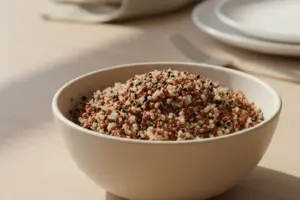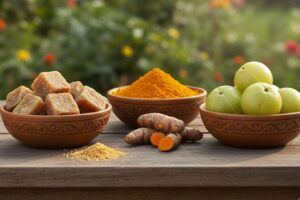
For people living with diabetes, choosing the right food isn’t just about weight management; it’s about controlling insulin swings or avoiding spikes in blood sugar levels. As a result, many people living with diabetes walk on a tightrope when it comes to food choices.
Contrary to popular belief, having diabetes doesn’t mean you have to completely cut out your favourite meals or flavourful foods. In fact, with smart choices, you can enjoy a wide range of delicious and nutritious foods, including fruits.
Here’s a breakdown of the best fruits and foods that diabetics can safely enjoy, without compromising on taste or health.
Also Read | Who says dolls can’t be diabetic? Barbie’s changing the game
Diabetic-Friendly Foods to Include in Daily Diet
Fruits:
Many people tend to avoid fruits, fearing the natural sugars they contain. But fruits also offer essential vitamins, fibre, antioxidants, and hydration—all of which support overall health and even help manage blood sugar when eaten right. The key is to choose low glycaemic index (GI) fruits that have a smaller impact on blood sugar.
- Berries: This includes strawberries, blueberries, and raspberries and is high in fibre and antioxidants. Packs a flavour punch when paired with a handful of nuts or Greek yogurt.
- Apples: Rich in fibre and vitamin C, apples are a great choice, as they help slow sugar absorption. It is recommended to consume apples with their skin intact. The juice, however, should be avoided.
- Guava: Guava is high in dietary fibre and vitamin C, and it is great for blood sugar management. It also helps with digestion.
- Papaya: A great option in moderate quantities, papaya supports digestion and is rich in vitamin A.
- Pears: Low on GI and high in fibre.
- Citrus Fruits: Packed with soluble fibre and vitamin C, citrus fruits like oranges, sweet limes, mosambi, and kiwis are a great way to control the glycaemic index. Eat the whole fruit rather than juice to avoid the sugar load.
- Jamun (Indian blackberry): A traditional diabetes-friendly fruit that may help improve insulin activity.
Also Read | Popular sugar substitute erythritol may harm blood vessels, cause stroke
Non-starchy Vegetables:
Vegetables like spinach, kale, cabbage, broccoli, cauliflower, ladyfinger, gourds, and brinjal are low in carbs and high in fibre.
Whole Grains:
Swap white rice with brown rice; incorporate oats, quinoa, and millets like ragi, bajra, and jowar in your diet. Whole wheat can also be used in moderation.
Proteins:
Eggs, paneer, tofu, and skinless chicken help with satiety without spiking sugar levels. For vegetarians, dals and legumes are excellent.
Healthy fats:
Healthy fats slow down digestion and glucose absorption, leading to better sugar control. Nuts (almonds, walnuts) and seeds (chia, flaxseed, and pumpkin) are good sources of fibre. Use oils like mustard, olive, or groundnut in moderation.

Foods that diabetics should avoid
- Mangoes
- Grapes
- Bananas
- Chikoo (Sapodilla)
- Lychee
- Pomegranate
- Watermelon
Most of these fruits contain natural sugars and are higher on the glycaemic index. They can cause spikes if eaten in large amounts. They’re not off-limits, but portion control is key.
Also Read | 1 in 3 US teens now have prediabetes, CDC estimates
Other items include
- White bread, white rice, and maida-based foods
- Sugary drinks and fruit juices
- Packaged snacks
- Deep-fried and fast food
- Alcohol in excess
Smart Eating Tips for Diabetics
- Watch portions: Even healthy foods can spike sugar if consumed in excess.
- Follow the Plate Method: Fill half your plate with non-starchy veggies, one-quarter with lean protein, and one-quarter with complex carbs.
- Time your meals: Eat at regular intervals to avoid sugar fluctuations.
- Exercise regularly, which improves insulin sensitivity
Living with diabetes doesn’t imply that you have to eat bland food. It’s about making the right choices, pairing food smartly, and monitoring the quantity.
For personalised guidance, consult a registered dietitian or have a word with your doctor.








